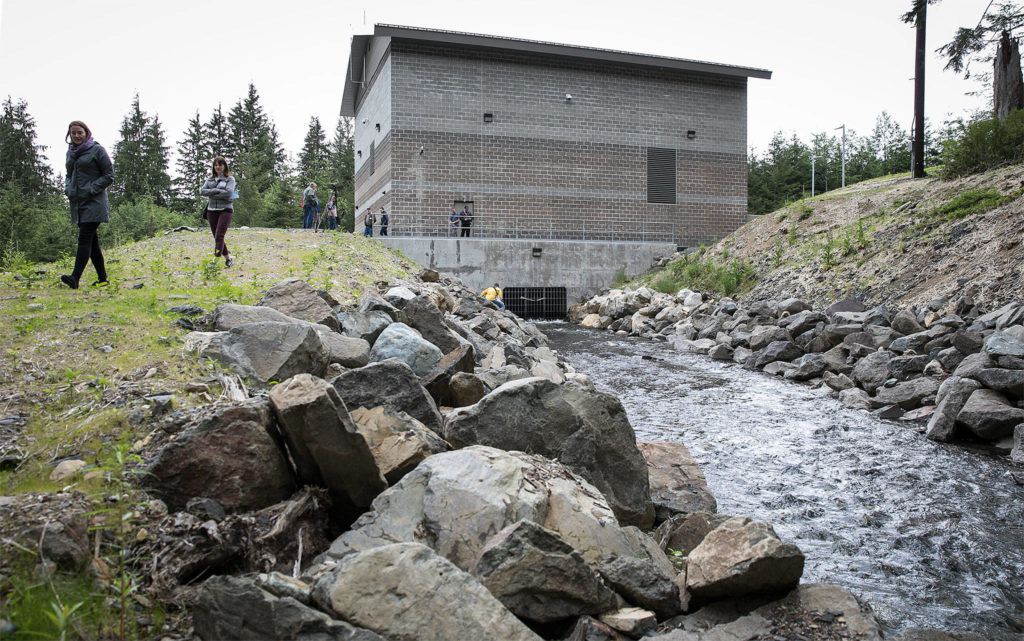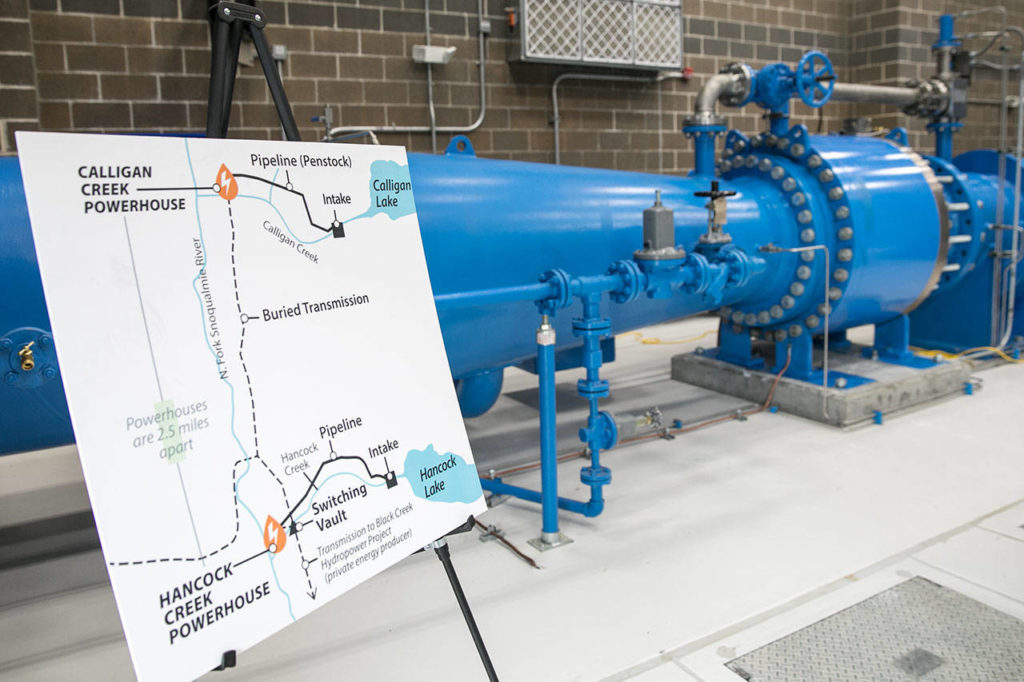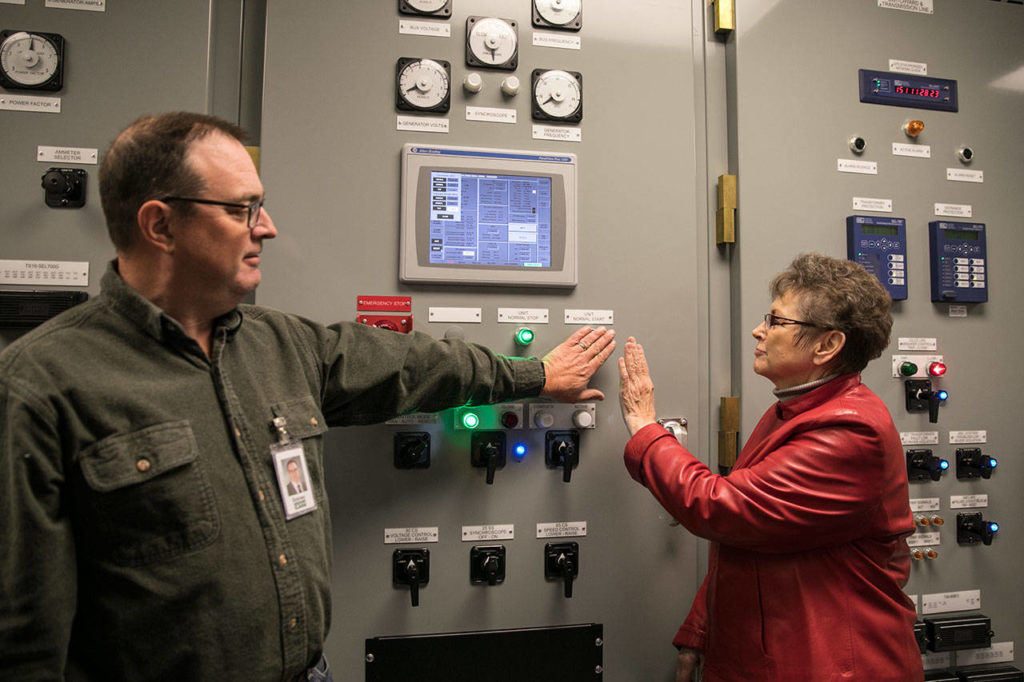SNOQUALMIE — The majestic waterfalls in the Snoqualmie Valley offer more than just spectacular hikes. The area also supplies neighboring Snohomish County with enough energy to power 10,000 homes miles away from the 1,000-foot drops that generate the megawatts.
The Snohomish County Public Utility District on Thursday dedicated two 6-megawatt hydroelectric plants fed by tributaries of the Snoqualmie River.
The Calligan Creek and Hancock Creek projects sit about five miles above the iconic falls. They will operate from fall until late spring when the creeks are reduced to a trickle. Some years the creeks are dry during the summer.
“The two projects are designed to both help us meet winter demand and future customer growth,” said Neil Neroutsos, a PUD spokesman.
With nearly 135 inches of rain a year, it’s an ideal spot for hydropower generation, he said.
Scott Spahr, a PUD manager, said the two sites were picked because of their location above Snoqualmie Falls — a natural barrier to salmon.
“It’s a small footprint and very deliberately located to have as small as an impact as we can,” Spahr said.
About 40 employees and others gathered to watch Thursday’s ceremony featuring PUD commissioners Sidney Logan and Kathleen Vaughn.
“Small hydro power, such as these, provide renewable energy that is cost-effective and that is carbon-free,” said Vaughn, the president of the commission.
Known as run-of-the-river facilities, the projects divert only a portion of the creeks rather than damming the water. Once collected at intake, the water is sent through pipes to a powerhouse about a mile away.
There, a turbine uses the rushing water to generate power. The water is then returned to the creeks. Water not diverted will continue to flow along the natural stream course.
At each intake area, a fish ladder was constructed for the resident trout population. Diversion weirs were added to filter debris and prevent fish from entering. The PUD is required to monitor the trout.
“The sites are appealing — very steep terrain and an inhospitable environment for fish,” said Keith Binkley, a PUD natural resource manager.
The Calligan Creek and Hancock Creek projects took two years to complete and cost about $60 million. The plants are nearly identical to a previous project built at Youngs Creek in the Sultan area.
“On average, the two new hydroelectric projects will provide about 0.8 percent of PUD’s energy supply,” Neroutsos said.
The public utility already operates three other hydroelectric plants, two in the Sultan area and one in Monroe. A hydroelectric project at Sunset Falls near Index was canceled in April.
All five of the hydroelectric power plants are operated remotely from the Henry M. Jackson Hydroelectric Project in the Sultan River Basin.
In total, hydropower makes up nearly 87 percent of the county’s power supply, much of which comes from the Bonneville Power Administration.
“It’s a pretty magical operation to take moving water to spin a turbine and have lights come on in homes in Snohomish County,” Spahr said.
Lizz Giordano: 425-374-4165; egiordano@heraldnet.com; Twitter: @lizzgior.
Talk to us
> Give us your news tips.
> Send us a letter to the editor.
> More Herald contact information.































